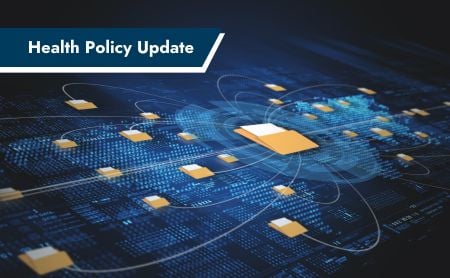‘Education pays’: Illinois high school students with college degrees earn more money – Chalkbeat

Analysis of Educational and Employment Outcomes in Illinois Through the Lens of Sustainable Development Goals
Introduction: Aligning State-Level Data with Global Development Objectives
A recent report from the Illinois Workforce and Education Research Collaborative provides critical data on the long-term outcomes of Illinois high school graduates from 2008-2012. An analysis of these findings reveals significant challenges and opportunities related to achieving several key United Nations Sustainable Development Goals (SDGs), particularly SDG 4 (Quality Education), SDG 5 (Gender Equality), SDG 8 (Decent Work and Economic Growth), and SDG 10 (Reduced Inequalities). While higher education demonstrably improves earning potential, persistent disparities based on socioeconomic status, race, and gender hinder progress toward these global targets.
Educational Attainment and Disparities: A Challenge to SDG 4 (Quality Education)
The report underscores that while education is a powerful tool for upward mobility, access to and completion of higher education is not equitable, presenting a direct challenge to the aims of SDG 4, which seeks to ensure inclusive and equitable quality education for all.
- Inequitable Access to Higher Education: Students from low-income households were found to be significantly less likely to obtain bachelor’s, master’s, or doctoral degrees compared to their peers from higher-income families. This directly contravenes SDG Target 4.3, which calls for equal access to affordable and quality tertiary education.
- Disparities in Advanced Opportunities: Participation in dual credit programs, which provide a pathway to college, has been inequitable. Students from low-income households, students of color, English learners, and students with disabilities were less likely to enroll, highlighting a failure to fully meet SDG Target 4.5, aimed at eliminating disparities in education for vulnerable groups.
- Post-Pandemic Enrollment Trends: A slight decline in postsecondary enrollment rates in Illinois following the COVID-19 pandemic, from 68.6% in 2018-19 to 66.1% in 2021-22, indicates a potential setback in achieving universal access to higher learning.
Economic Outcomes: Gaps in Decent Work (SDG 8) and Increased Inequalities (SDG 10 & SDG 5)
The data on employment and wages reveals that educational attainment alone does not erase systemic inequalities, impacting the state’s progress on ensuring decent work, equal pay, and reduced inequality.
Key Findings on Economic Disparities
- The Value of Education: In line with the principles of SDG 8, education does lead to economic growth. Individuals with advanced degrees earn approximately 2.5 times more than those with only a high school diploma.
- Socioeconomic Inequality (SDG 10): A significant earnings gap persists based on parental income. Even with identical degrees, graduates from high-income households earned an average of $5,815 more than those from low-income households. Overall, children of the highest earners made 48% more than children of the lowest earners, directly challenging SDG Target 10.3 to ensure equal opportunity and reduce inequalities of outcome.
- Racial and Ethnic Disparities (SDG 10): Among individuals from the same socioeconomic background, Black and Latino graduates earned less than their Asian American and white counterparts, indicating that racial inequality remains a barrier to economic inclusion.
- Gender Inequality (SDG 5): The report notes that women who graduate from college are likely to be paid less than their male counterparts, a clear violation of the principles of gender equality and SDG Target 8.5, which advocates for equal pay for work of equal value.
- Career Path Segregation (SDG 8): Students from low-income families were underrepresented in high-paying fields like computer science and engineering, and overrepresented in lower-wage sectors such as accommodation and food services. This points to systemic barriers preventing equitable access to decent work and full, productive employment for all.
Policy Interventions to Advance Educational Equity
In response to these challenges, Illinois has implemented several policy measures aimed at improving access to higher education, which align with the state’s commitment to advancing the SDGs.
- Financial Support: The state increased funding for the Monetary Award Program (MAP) grant by $10 million, providing crucial financial aid to students from low-income families to pursue higher education, directly supporting SDG 4.
- Streamlined Admissions: The Public University Direct Admission Program Act will allow public universities to offer admission based on GPA, simplifying the application process for students and promoting wider access.
- FAFSA Completion Support: New laws require high schools to designate a point person and set aside time for students to complete the FAFSA, removing barriers to federal financial aid.
- Dual Credit Expansion: A measure requires school districts and community colleges to collaborate on creating dual credit programs, aiming to broaden access to these valuable opportunities.
Conclusion: The Path Forward
The report by the Illinois Workforce and Education Research Collaborative serves as a critical benchmark for assessing the state’s progress toward the Sustainable Development Goals. The findings confirm that education is a key driver of economic mobility but is insufficient on its own to overcome deep-seated inequalities related to class, race, and gender. Continued and targeted policy interventions are necessary to ensure that all students have equitable access not only to quality education (SDG 4) but also to the decent work and equal opportunities (SDG 8, SDG 10, SDG 5) that follow.
Analysis of SDGs, Targets, and Indicators
1. Which SDGs are addressed or connected to the issues highlighted in the article?
- SDG 4: Quality Education
- SDG 5: Gender Equality
- SDG 8: Decent Work and Economic Growth
- SDG 10: Reduced Inequalities
2. What specific targets under those SDGs can be identified based on the article’s content?
-
SDG 4: Quality Education
- Target 4.3: By 2030, ensure equal access for all women and men to affordable and quality technical, vocational and tertiary education, including university.
The article directly addresses this target by highlighting disparities in access to higher education. It states that “students from low-income households were less likely to obtain bachelor’s degrees, master’s degrees, doctoral degrees, or professional licenses than their peers from higher-income households.” It also discusses policy actions in Illinois aimed at improving access, such as increasing the Monetary Award Program (MAP) grant for low-income students and signing the Public University Direct Admission Program Act. - Target 4.4: By 2030, substantially increase the number of youth and adults who have relevant skills, including technical and vocational skills, for employment, decent jobs and entrepreneurship.
This target is relevant through the discussion of dual credit programs, which “allow high school students to take college courses and earn credit for high school and college.” The article notes that while participation has increased, “students from low-income households, students of color, English learners, and students with disabilities were less likely to take those courses,” indicating a need to improve equitable access to these skill-building opportunities.
- Target 4.3: By 2030, ensure equal access for all women and men to affordable and quality technical, vocational and tertiary education, including university.
-
SDG 5: Gender Equality
- Target 5.5: Ensure women’s full and effective participation and equal opportunities for leadership at all levels of decision-making in political, economic and public life.
The article touches upon the economic aspect of this target by pointing out gender-based pay disparities. It states that “women who graduate from college are likely to be paid less than affluent, white male counterparts,” which signifies a lack of equal opportunity in economic outcomes.
- Target 5.5: Ensure women’s full and effective participation and equal opportunities for leadership at all levels of decision-making in political, economic and public life.
-
SDG 8: Decent Work and Economic Growth
- Target 8.5: By 2030, achieve full and productive employment and decent work for all women and men, including for young people and persons with disabilities, and equal pay for work of equal value.
This target is central to the article’s findings. The report discussed shows that even with the same level of education, significant pay gaps exist. The article notes, “Regardless of whether students had the same levels of education… students from high-income households earned more than their peers who came from low-income households.” It also highlights that “Black and Latino students earned less than Asian American and white students,” directly addressing the goal of equal pay for work of equal value.
- Target 8.5: By 2030, achieve full and productive employment and decent work for all women and men, including for young people and persons with disabilities, and equal pay for work of equal value.
-
SDG 10: Reduced Inequalities
- Target 10.2: By 2030, empower and promote the social, economic and political inclusion of all, irrespective of age, sex, disability, race, ethnicity, origin, religion or economic or other status.
The article is fundamentally about the lack of economic inclusion for certain groups. It details how disparities “persist along race and ethnicity, socioeconomic backgrounds, and gender” in both education and employment outcomes, showing that students from low-income families and students of color are underrepresented in high-paying careers. - Target 10.3: Ensure equal opportunity and reduce inequalities of outcome, including by eliminating discriminatory laws, policies and practices and promoting appropriate legislation, policies and action in this regard.
The article discusses several policy actions in Illinois designed to promote equal opportunity. These include increasing funding for the MAP grant, creating a direct university admission program based on GPA, and requiring high schools to provide support for FAFSA completion. These are all examples of “appropriate legislation, policies and action” aimed at reducing inequalities of outcome.
- Target 10.2: By 2030, empower and promote the social, economic and political inclusion of all, irrespective of age, sex, disability, race, ethnicity, origin, religion or economic or other status.
3. Are there any indicators mentioned or implied in the article that can be used to measure progress towards the identified targets?
-
SDG 4: Quality Education
- Postsecondary education enrollment rate: The article explicitly mentions this indicator, citing state data: “Students who enrolled in college within 12 months after graduating high school went from 68.6% in 2018-19 to 66.1% in 2021-22 school year.”
- Educational attainment rates by socioeconomic background: The report’s finding that “students from low-income households were less likely to obtain bachelor’s degrees, master’s degrees, doctoral degrees, or professional licenses” serves as an indicator. Progress would be measured by a reduction in this gap.
- Participation rate in dual credit programs: The article implies this as an indicator by stating that participation has increased but remains inequitable for students from low-income households and students of color.
-
SDG 5, 8, and 10 (related to pay and income)
- Average earnings/wages, disaggregated by sex, race/ethnicity, and socioeconomic background: The article provides several quantitative indicators of inequality.
- The earnings gap between students from high-income and low-income households with the same degree is “$5,815.”
- The earnings gap between college graduates and those with only a high school diploma is “$39,966.”
- The earnings of students whose parents were highest earners are “about 48% more” than those from the lowest-earning group.
- Qualitative mentions of earnings gaps for “Black and Latino students” compared to “Asian American and white students,” and for “women” compared to “male counterparts.”
- Representation in high-paying careers by socioeconomic background: The article indicates that “students in the study’s sample from low-income families were underrepresented in high-paying careers such as computer information sciences and engineering,” which can be measured to track progress.
- Average earnings/wages, disaggregated by sex, race/ethnicity, and socioeconomic background: The article provides several quantitative indicators of inequality.
4. Table of SDGs, Targets, and Indicators
| SDGs | Targets | Indicators |
|---|---|---|
| SDG 4: Quality Education | 4.3: Ensure equal access for all women and men to affordable and quality technical, vocational and tertiary education, including university. |
|
| SDG 5: Gender Equality | 5.5: Ensure women’s full and effective participation and equal opportunities for… economic… life. |
|
| SDG 8: Decent Work and Economic Growth | 8.5: Achieve full and productive employment and decent work for all… and equal pay for work of equal value. |
|
| SDG 10: Reduced Inequalities | 10.2: Empower and promote the social, economic… inclusion of all, irrespective of… race, ethnicity… or economic… status.
10.3: Ensure equal opportunity and reduce inequalities of outcome. |
|
Source: chalkbeat.org

What is Your Reaction?
 Like
0
Like
0
 Dislike
0
Dislike
0
 Love
0
Love
0
 Funny
0
Funny
0
 Angry
0
Angry
0
 Sad
0
Sad
0
 Wow
0
Wow
0











































































